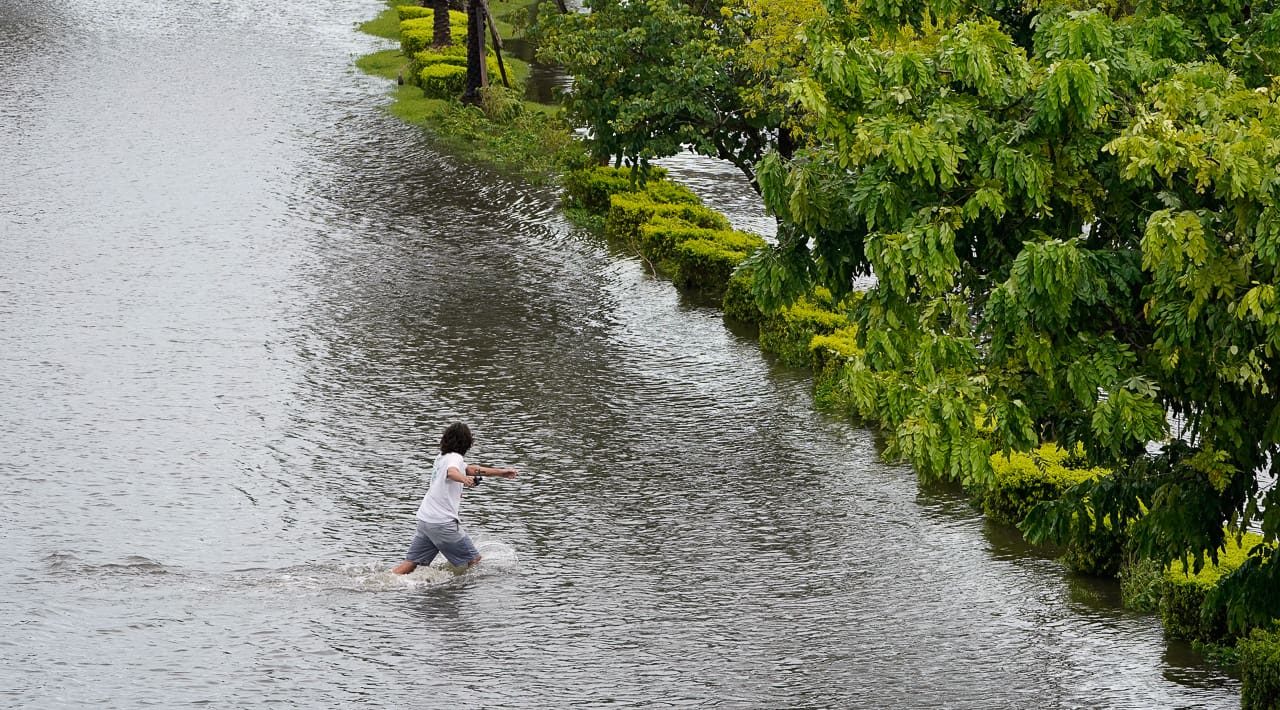CEDAR KEY, Fla. — Hurricane Idalia made landfall Wednesday in Florida as a Category 3 storm and unleashed devastation along a wide stretch of the Gulf Coast, submerging homes and vehicles, turning streets into rivers, unmooring small boats and downing power lines in an area that has never before received such a pummeling.
More than 330,000 customers in Florida and Georgia were without electricity while rushing water covered streets near the coast. As the eye moved inland, high winds shredded signs, sent sheet metal flying and snapped tall trees.
Locally, strong winds knocked out power to about 600 of Key Biscayne residents even though Idalia’s path was far from Key Biscayne. A 42-mph gust was recorded at Rosenstiel School on Virginia Key Wednesday morning. The National Weather Service said the rain threat had receded, with new rainfall amounts expected to be from one-quarter to one-half inch.
But the scene was hazardous closer to Idalia’s path.
“We have multiple trees down, debris in the roads, do not come,” posted the fire and rescue department on the island of Cedar Key, where a tide gauge measured the storm surge at 6.8 feet (2 meters) — enough to submerge most of the downtown. “We have propane tanks blowing up all over the island.”
Idalia came ashore in the lightly populated Big Bend region, where the Florida Panhandle curves into the peninsula. It made landfall near Keaton Beach at 7:45 a.m. as a high-end Category 3 hurricane with maximum sustained winds near 125 mph.
RJ Wright stayed behind on Cedar Key so he could check on elderly neighbors. He hunkered down with friends in a motel and when it was safe, walked outside into chest-high water. It could have been a lot worse for the island, which juts into the Gulf, since it didn’t take a direct hit, he said.
“It got pretty gnarly for a while, but it was nothing compared to some of the other storms,” Wright said.
The system remained a hurricane as it crossed into Georgia with top winds of 90 mph, after drenching Florida mostly to the east of Tallahassee. Forecasters said it would punish the Carolinas overnight as a tropical storm.

In the town of Perry, the wind blew out store windows, tore siding off buildings and overturned a gas station canopy. Interstate 275 in Tampa was partially flooded, and toppled power lines closed northbound Interstate 75 just south of Valdosta, Georgia.
About 200 miles to the south of where Idalia made landfall, the roads around the chic shops and restaurants of St. Armands Circle in the Sarasota area were underwater.
Astounded by the flooding that turned Tampa’s Bayshore Boulevard into a river, Bill Hall watched a paddleboarder ride along the major thoroughfare.
“This is actually unbelievable,” Hall said. “I haven’t seen anything like this in years.”
In Tallahassee, Florida’s capital city, the power went out well before the center of the storm arrived.
Tallahassee Mayor John Dailey urged everyone to shelter in place. Florida residents living in vulnerable coastal areas had been ordered to pack up and leave as Idalia gained strength in the warm waters of the Gulf of Mexico.
“Don’t put your life at risk by doing anything dumb at this point,” Gov. Ron DeSantis said Wednesday at a news conference.
Storm surge could rise as high as 16 feet in some places. Some counties implemented curfews to keep residents off roads.
Diane Flowers was sound asleep at 1 a.m. Wednesday in her Wakulla County home, but her husband was up watching the weather on TV when he got a text from their son after the storm was upgraded to a Category 4. He’s a firefighter/EMT in Franklin County, which is also along the Gulf Coast.
“He said, ‘You guys need to leave,'” Flowers said. “And he’s not one for overreacting, so when he told us to leave, we just packed our stuff, got in our car and got going.”
Asked about the hurricane Tuesday, President Joe Biden said he had spoken to DeSantis and “provided him with everything that he possibly needs.”
Ian was responsible last year for almost 150 deaths. That Category 5 hurricane damaged 52,000 structures, nearly 20,000 of which were destroyed or severely damaged.
The National Oceanic and Atmospheric Administration recently said the 2023 hurricane season would be far busier than initially forecast, partly because of extremely warm ocean temperatures. The season runs through Nov. 30, with August and September typically the peak.


